Whether you call it appropriate technology, intermediate technology or soft technology, it is a way of doing things, usually designed for a third world situation, that use simple technology that can be built and kept running using local resources. We in the more developed nations can still benefit from using this type of technology too that we can build and maintain ourselves. There are also books on Appropriate Technology available in the 'Energy' section of the library.
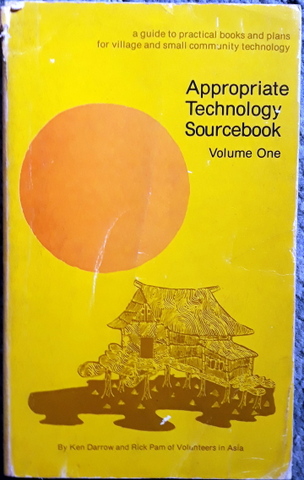
Appropriate Technology Sourcebook Vol 1 – Ken Darrow & Rick Pam – Volunteers in Asia Inc. (US) 1981 ISBN 0 917704 08 8 – This is (as it says) a list of resources such as books, magazines, plans and articles about appropriate technology and where they may be obtained. Obviously a lot of those reference would outdated but if you know something exists you may be able to track it down on the net. Also, there are lots of line drawing of projects in the book which make it fascinating in itself. The list of subjects covered includes – philosophy of appropriate technology, tools to make tools, agriculture and agricultural tools, food preservation and storage, energy (all types including biomass, methane and pedal power), water, architecture, health care and village industries. Lots of really interesting line drawings.
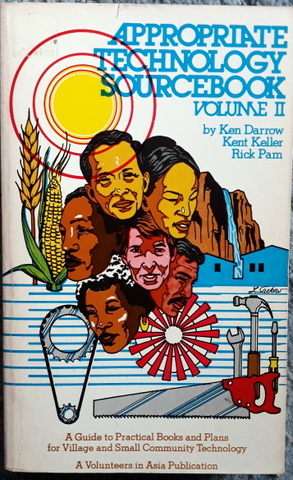
Appropriate Technology Sourcebook Vol 2 – Ken Darrow, Kent Keller & Rick Pam – Volunteers in Asia Inc. (US) 1981 ISBN 0 917704 06 1 – Similar to volume 1 but with 500 more pages. The agriculture section is broken up into soils, crops, seeds and fertiliser, irrigation, gardening and livestock. Water supply and sanitation is broken up participation, research, small water supply systems, tanks and ponds, filtration and treatment, sanitation and water reuse and solids management. New subjects added include forestry, aquaculture, beekeeping, improved cookstoves and charcoal production, non-formal education and training, small enterprises and cooperatives and local communications. Lots of line drawings.

Soft-Tech – J. Baldwin & Stewart Brand (Eds.) – Penguin Books (US) 1978 ISBN 978 0 140048 0 63 – This is in a similar format to the above two books, being a collection of appropriate technology resources, but also with a number of full size articles about various subjects as well. The subjects of the full size articles include underground architecture, bicycle technology and historical solar hot water. General topics covered for resources include tools, invention Including Steve Baers’ Zomeworks stuff, solar wind, transport, steam, biofuels, building and integrated systems. There are lots of line drawings and black and white photos.
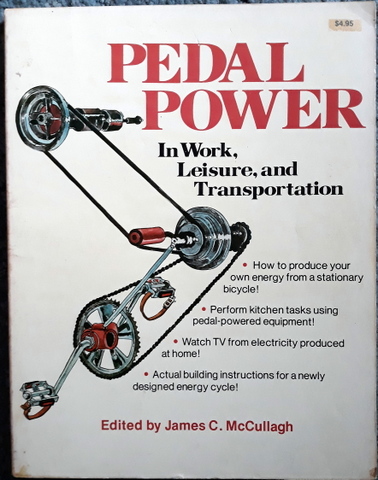
Pedal Power – James C. McCullagh(Ed.) – Rodale Press (US) 1977 ISBN 0 87857 178 7 – This was my first introduction to the concept of pedal powered machines outside the bicycle. I picked it up at the Sun Powered Eukey Complex many moons ago! There are six chapters, the first one covering human muscle power in a historical context and some of the inventions put together to make use of it. Chapter two covers pedal power on the land and talks about more current inventions including the oxtrike and foot powered pumps. Chapter three gives quite detailed plans on how to make a foot powered ‘generator’ or multi-use stationary bicycle style power source. Chapter four discusses using stationary bicycle to power clothes washing, wood sawing and water pumping. Chapter 5 covers pedal power in the workshop including drawings for a pedal powered band saw. Chapter six talks about the future potential for pedal power including some ideas for new (and old) inventions. Lots of line drawings and black and white photos.
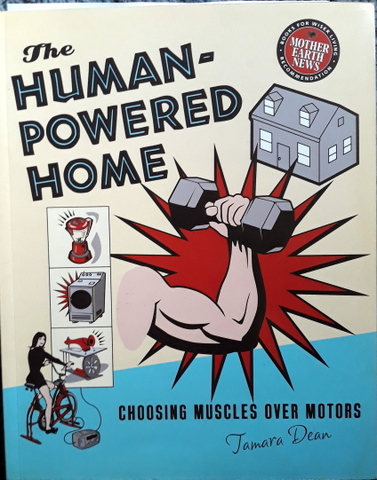
The Human Powered Home – Tamara Dean – New Society Publishers (CAN) 2008 ISBN 978 0 8671 601 8 – This book is a mixture of historical human powered devices, commercially available human powered devices and plans for making your own human powered devices (HPDs). Chapter one covers the evolution and history of HPDs and chapter two covers the theory of how HPDs can be constructed. Chapter 3 covers kitchen HPDs including plans for a blender and converting a hand grain mill to pedal power. Chapter 4 covers garden HPDs including plans for a bike frame cultivator and treadle pump, chapter 5 covers housework including plans for a pedal powered washing machine and converting an electric sewing machine to treadle power. Chapter 6 covers recreation and emergency preparedness including plans for a HPD generator and a tool sharpener. Lots of line drawings and B&W photos.
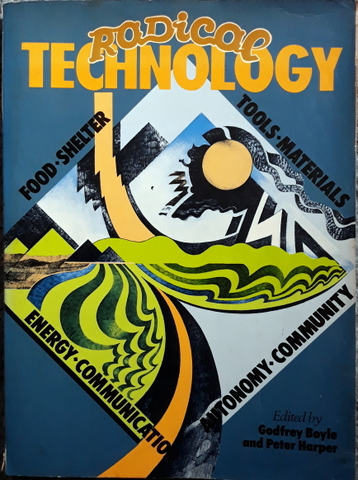
Radical Technology – Godfrey Boyle & Peter Harper – Wildwood House (UK) 1976 ISBN 0 7045 0159 7 – This one is appropriate technology with a dash of restructuring the social order. While the more common subjects of food, shelter, energy and tools each get a chapter, there are also chapters on communication which talks about print, telephone, community radio and video (The would love the ‘net!), autonomy, which talks about opting out of the system, and materials, ie making your own, including paper, working wood, utilising scrap and some DIY chemistry. At the front of each section is a full page drawing of a ‘Vision’ eg community media centre or autonomous housing estate, and they are just wonderful! I love them! Some of the technology discussed is dated but still lots of good information. Lots of line drawings and B&W photos.

Tools for the Soft Path – Jim Harding – Friends of the Earth (US) 1982 ISBN 0 91890 54 5 – This one is a ‘Big Picture’ rather than a ‘how to’ and covers the state of play in the US on several aspects of appropriate and alternative technologies at the time (late 70’s early 80’s) so it is a bit dated but provides interesting historical context. The book is composed of a series of short articles on each subject. Part 1 covers techniques for an efficient, renewable energy future including buildings, appliances and lighting, onsite direct solar use, transport, biomass, agriculture and industry. Part 2 talks about improving efficiencies, including various studies at a country level and the global outlook. Part covers the third world including energy and social development, technologies for providing energy to the third world, and several country studies. Part 4 covers institutional aspects including the barriers to implementing soft technologies and some new approaches. There is one essay (P185) stating that we need to cut back fossil fuel used before atmospheric CO2 becomes a problem!!! Some line drawings and graphs.
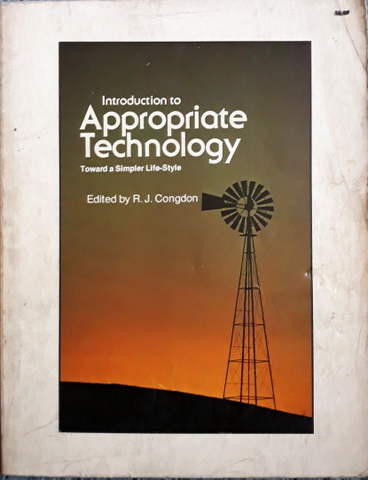
Introduction to Appropriate Technology – R.J. Congdon (ED.) – Rodale Press (US) 1977 ISBN 0 87857 188 4 – This another ‘Big Picture’ book rather than ‘how to’. There ae twelve comparatively short chapters on various aspects of appropriate (also referred to as intermediate) technologies, each by a different author. Chapter one focusses on the AT approach and how to identify what might work in a particular context, chapter two is more detailed, talking about the social context for choosing water technologies for third world water supplies. Chapter 3 covers agricultural tools, particularly those for breaking ground, chapter four is about building, chapter 5 energy, chapter 6 pedal power. Chapter seven talks about low tech chemical technology, chapter 8 educational systems, chapter 9 talks about designing production systems for the third world. Chapter ten talks about developing and using production systems in developing countries, chapter eleven talks about the social context of applying appropriate technology in developing countries. Chapter 12 talks about education and the transfer of skills for developing appropriate technology in the third world. The book has some line drawings and B& photographs.
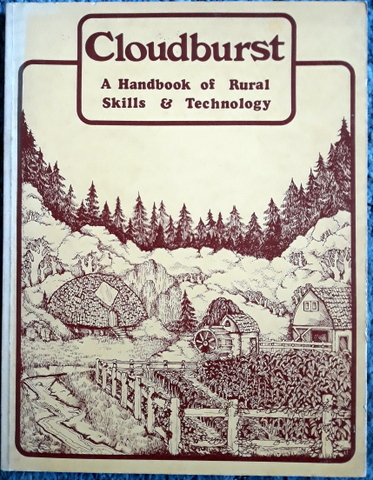
Cloudburst – Vic Marks (Ed.) – Cloudburst Press (CAN) 1973 ISBN 978 0 88930 016 3 – This book is basically a series of ideas and plans on how to construct various devices which would be classed as alternative technology. Each device or idea covers two to three pages of writing and associated plans and line drawings. Devices and ideas include a dome to be used for accommodation, poultry house, composing toilets, bee keeping, waterwheels and other ways of using flowing water, windmill, forge and cheesemaking. The book contains lots of line drawings.
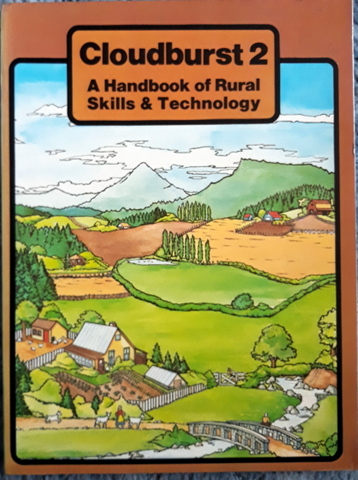
Cloudburst 2 – Vic Marks (Ed.) – Cloudburst Press (CAN) 1976 ISBN 978 0 8890 010 0 – Same as above. Ideas and devices include setting up a roof to harvest the suns heat in high latitudes, an eco cabin, various woodburning cookers, a carding machine, several spinning wheel designs, a food drier, a controlled smokehouse, a couple of woodburning kilns, honey extractor, several water pumping hydraulic rams and foot and hand powered tool designs. Lots of line drawings.
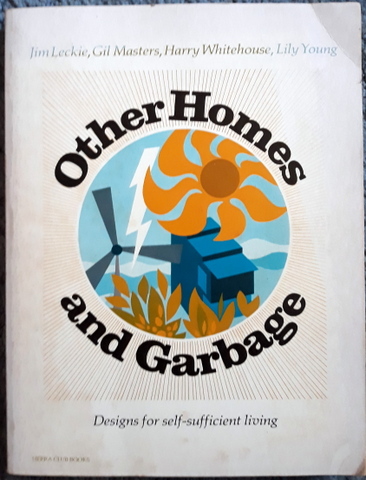
Other Homes and Garbage – Jim Leckie, Gil Masters, Harry Whitehouse, Lily Young – Sierra Club Books (US) 1975 ISBN 87156 141 7 – Written by four engineers from Stanford University (Calif.) the book covers alternative architecture, small scale electricity generation, principles of solar heating water supply, waste handling, agriculture and aquaculture, all in some considerable detail. As one would expect from a book written by engineers it is not designed for the complete novice and can get quite technical in places. The book has lots of interesting stuff, though, and lots of line drawing and tables.
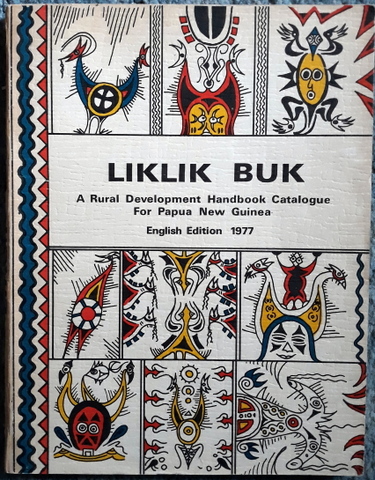
Liklik Buk – P.R. Hale & B.D. Williams (Eds.) – The Melanesian Council of Churches (PNG) 1977 ISBN 0 86935 0244 – This book (designed for tropical New Guinea)covers a host of subjects on how to use ‘village’ technology. Subject included are how to grow various crops including starchy energy crops, legumes, oil plants, traditional vegetables, fruits, nuts and other tree crops, beverages and spices. Soil management including tillage and pests and diseases are also covered. Livestock including poultry and other farm animals, but also fish, insects and wildlife. There is a section on ‘processes’ covering crop and livestock processing and utilisation, food prep, building and road construction, village industry, arts and crafts. The section on ‘Designs’ covers energy, water resources, crop and livestock production equipment, hunting and fishing, transport, sewing and mending designs. The is also a section on village development and also one on health and nutrition. Lots of information, some line drawings and B&W photos.
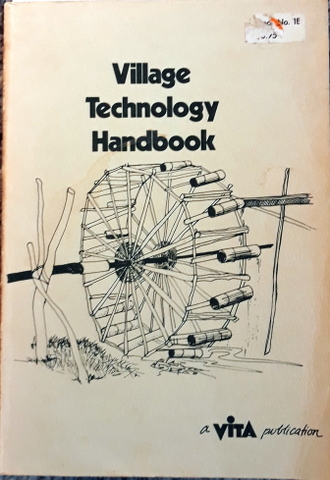
Village technology Handbook – Volunteers in Technical Assistance (VITA) (US) 1970 ISBN 978 0 86619 275 0 – This book is an amazing compendium of plans, tools and techniques for making and using appropriate technology devices. There is a section on water resources covering: developing water sources; water lifting and transport; water storage and water power and finally water purification. There is a health and sanitation section which is primarily concerned with the design and construction of latrines to safely treat human waste. The agriculture section covers earthmoving devices, irrigation, poultry and silage production for dairy cows. The food processing section covers various techniques for home food preservation. The construction section covers use of concrete and bamboo in construction, as well as making and using casein and fish glues. There is a section on home improvements which talks about solar water heaters, washing machines, cookers and stoves, soapmaking and bedding. There is a section on crafts and village industry and one on low tech communications. Lots of line drawings and the occasional B&W photo.
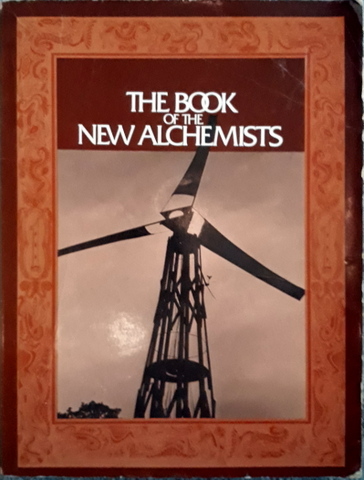
The Book of the New Alchemists – Nancy Jack Todd (Ed.) – E.P. Dutton (US) 1977 ISBN 978 0 525474 65 4 – This book is a mixture of: “here is the problem”, “this is what we intend to do” and “this is what we did do/have done and how it worked”. It was produced by the New Alchemy Institute, a small international organisation that was based in Woods Hole, Mass. in the US. It started in the late 1970’s and closed in 1991. The book starts with a review of how the institute developed, and their plans for projects in Costa Rica. Further sections include articles on aquaculture, including backyard fish farming, agriculture and energy, and bioshelters. At the end of the book is a very interesting article by Nancy Jack Todd entitled ‘Women and Ecology’. Some line drawings and B&W photos.


